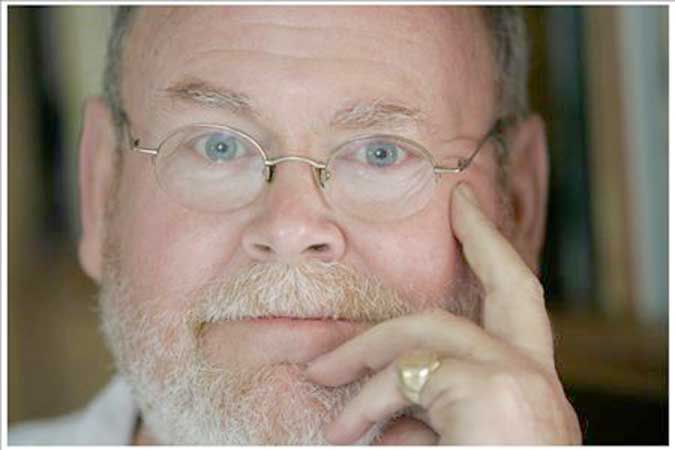“The dead are no longer invited to their own funerals,” asserts Thomas Lynch — coauthor of “The Good Funeral: Death, Grief and the Community of Care” with Thomas Long, professor of preaching at Emory University’s Chandler School of Theology.
“They’ve been sort of dismissed out of hand,” the veteran funeral director and parishioner of St. Mary Church in Milford, Mich., told The Tidings recently. “Instead we have ‘memorial services’ or ‘celebrations of life’ weeks, months or even years after the actual death. At least that’s the way for many suburban white Protestants today, and more and more Catholics, too.”
Then the 65-year-old poet and author of “The Undertaking: Life Studies from the Dismal Trade” spelled out the reasons why. He talks about the “inconvenience” and “urgency” of most deaths, with funerals having to be scheduled at a moment’s notice. And then there’s the labor and expense of dealing with a dead body. No corpse means no embalming, no casket, no cemetery plot.
“So I guess what I’m saying is that to the extent that every funeral is wrapped around the disposition of the dead, we have nowadays developed a funeral that is just badly attended,” he said. “It’s often attended only by the functionaries, like myself.
“We will this week go to a retort [crematory] a couple townships north of here in Michigan and take bodies that have died through the holidays. Basically, there will be no witnesses or ceremony or wake or anything like that. We will basically be taking the dead to their disposition. But nobody attends except us.”
The second generation undertaker and partner of Lynch & Sons Funeral Directors, however, believes there’s a much deeper reason for the popularity of “body-less” services today. He says the death of a family member or friend is both a psychological and religious event with social and commemorative overtones. It’s an existential happening that involves not only grief but being and not being, holding on and letting go, fear of extinction and faith in eternity.
“A corpse is not a symbol or a metaphor or an image,” observed Lynch. “A corpse is the fact of mortality. The thing that was breathing and animate is no longer breathing and animate. And I think Catholics, in particular, understand this whole incarnate nature. We still keep corpses riveting in pain on our crosses, which is different from the Reformation idea of Christianity.
“We want miracles of the flesh. So we are a bodily incarnate, task-oriented people, which is why when it comes to funerals we walk the corpse into the church to the foot of the altar. We make our holy people stand over the corpse and say, ‘Behold, I show you a mystery. Even though this lifeless, dead thing is here before us horizontal, there is more to this than you can see.’”
For Lynch and Long, a “good funeral” doesn’t mean having bagpipers or releasing doves or buying an expensive copper casket. The issue comes down to three essentials, which haven’t really changed in the 50,000 years humans have been dealing with their dead.
There must be a body — “someone who agrees to quit breathing forever,” according to Lynch. There has to be at least one mourner who cares about the deceased. And, last, somebody to conduct the funeral ritual that brokers the peace between the radically changed realities of the living and the dead is required.
“But Long makes the point, and I think convincingly, that one of the reasons that we do not do funerals as well as we used to is because we’ve lost our nerve in terms of faith, our eschatological nerve, our sense of last things and a final justice,” Lynch pointed out.
But a Requiem Mass or Lutheran, Jewish or Muslim funeral still accomplishes the basic essentials, reports Lynch.
“It’s the magic by which living people can take leave of the dead by putting them in a fire or the sea or the ground,” he said. “That is a big thing. It’s going to the edge and saying, ‘OK, now we give you back to our creator. Now we give you back to God. It’s at the edge when all of this makes sense. This is when we really press our noses up against the window of what we believe.”

